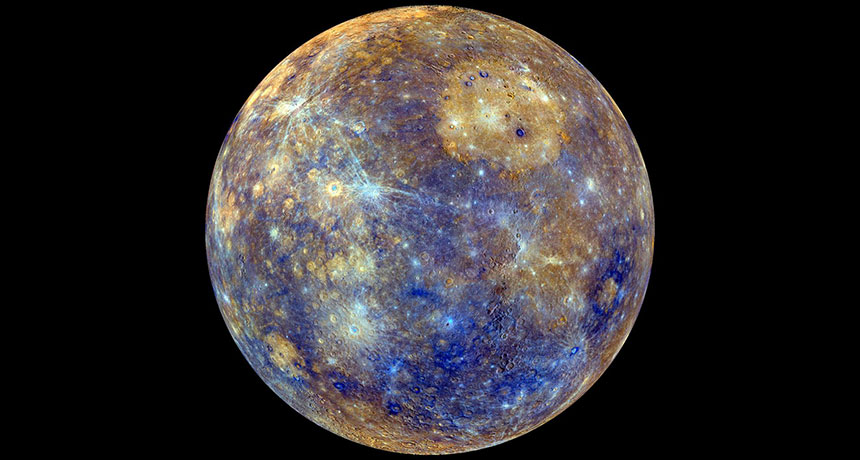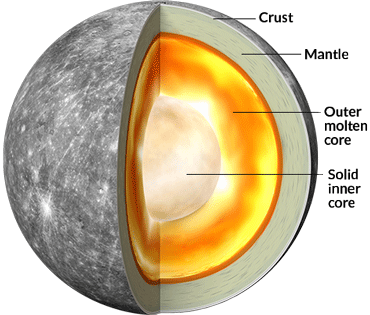Mercury has a massive solid inner core
Data from a NASA craft’s last days suggest the inner core makes up about half of the total core

POCKMARKED PLANET This enhanced-color image of Mercury, using data gleaned from NASA’s MESSENGER mission, reveals mineralogical differences in the rocks that make up Mercury’s crust. The mission, which ended in 2015, continues to yield new finds, including that Mercury has a giant solid inner core.
Carnegie Inst. of Washington, JHU-APL, NASA









